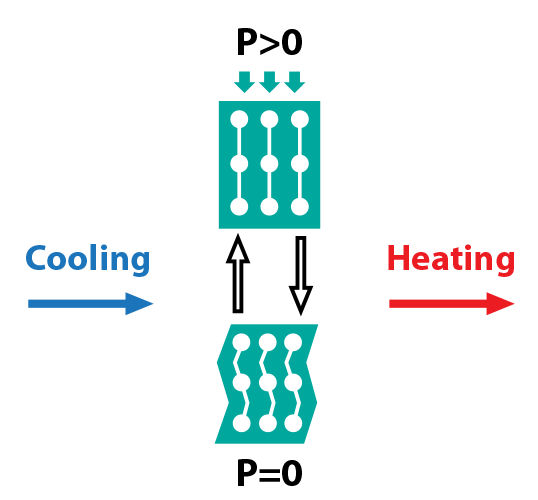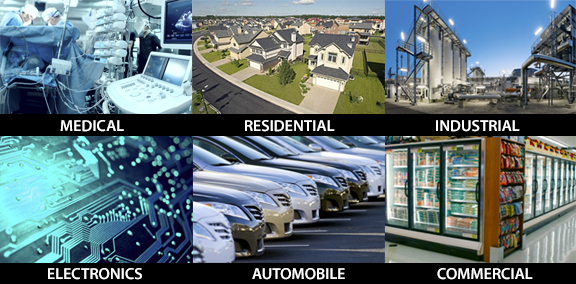Elastocaloric Effect
Elastocaloric materials are solids capable of stress-induced reversible phase transformations during which latent heat is released or absorbed. The elastocaloric effect occurs when stress is applied or removed, and a phase transformation is induced. As a result of the entropy difference between the two co-existing phases, the material heats up or cools down. A good elastocaloric material must exhibit a large latent heat, a large adiabatic temperature change, good thermal conductivity, long fatigue life, and low cost. Shape memory polymers can also exhibit elastocaloric effect.
Elastocaloric Materials
- Alloys
- Ceramics
- Salts
- Polymers

Advantages of Elastocaloric Refrigeration
- More efficient than vapor-compression refrigeration
- No gases or volatile liquids involved
- Non-hazardous
- Re-usable and recyclable parts and components





